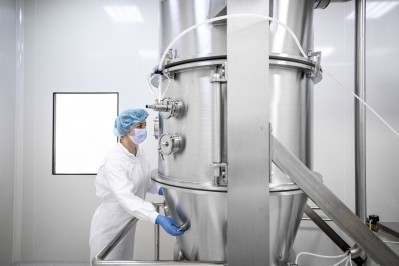Interview: Grapevine's CEO on piecing together the puzzle for standardized data

Luka Yancopoulos is CEO of Grapevine and explains the importance, and challenges, of standardizing data from different sources in order to process it at scale.
What are some of the top challenges you see companies facing in implementing data and AI solutions for supply chain visibility? How does Grapevine help address those?
Imagine you've got a big box of puzzle pieces - but the box is missing pieces from the original puzzle, and it's got pieces from lots of different puzzles that have been mixed up. If you were to try to put the pieces together, to complete the puzzle and make 'pictures', you would struggle. In healthcare supply chains, we're trying to use AI to build a better picture - to compare supply options, lower supply costs, and predict shortages before they happen. To do this, we rely on data. But like the puzzle pieces, the data is all mixed up, it comes from different old systems - exported from existing IT infrastructure, legacy systems, and businesses.
We're dealing with different pieces that don't quite fit together, and the legacy companies who own that data, like the Mckessons of the world, they don't make it easy to retrieve your missing pieces. Your data, like your puzzle pieces must be standardized, and you need a lot of it. Grapevine works with many of the legacy supply chain players, including McKesson, to consolidate data from many siloed sources. But these legacy businesses need to do a better job of creating and sharing information. At Grapevine, we've done a pretty good job of partnering with many of these legacy supply chain players, McKesson, Medline, and Schein - we connect to their antiquated data sharing systems, we standardize the information from those systems and process it at scale.
How does Grapevine facilitate integration and ensure quality data inputs?
The 'industry standard' for information sharing and integration is a technology that was invented in the 60s and popularized in the 90s - and it hasn't changed much. The foundation of healthcare supply chain integration is outdated, and older than most of Grapevine's employees, which has led to challenges. Nonetheless, we've rigged these outdated systems to a modern AI-powered processing, forecasting, and shopping experience. We take information, previously locked within the portal of each supplier out there, and we sync it, to your one and only, custom-built shopping center. As a new practice joining Grapevine, you sign up, sync your vendors, and effortlessly access all the trusted suppliers you need. As you shop, adding items to your cart, we do the hard work of instantly finding you cheaper alternative sources for the same products you need to deliver the highest quality of patient care
Real-time visibility and insights enabled by AI seem invaluable for supply chain agility and efficiency. What benefits have you seen your customers achieve from Grapevine?
In terms of dollars, medical practices are typically saving more than 50% on their supply costs. These savings are achieved effortlessly, as clinicians and shoppers are given back the 10-20 hours a week that they used to spend 'solving backorders’ and 'comparing cost-saving opportunities’. But to the clinicians on the front line? We give clinicians confidence in your supplies, by effortlessly finding alternative sources for your back-ordered items to keep you stocked through chaos.
And for business owners? We give business owners, and financial analysts peace of mind, that they are getting the best price, every time they order, without lifting a finger. Grapevine is the ultimate procurement master, built to reduce your spending, and liberate healthcare businesses from the burden of 'supply ordering’. By doing this we give healthcare businesses the time needed to find new suppliers and build a broader supply network that allows suppliers to compete for their business to drive further savings.
How specifically does Grapevine provide visibility into supplier performance, logistics delays, demand signals, etc. to help supply chain professionals respond better and faster?
We are not a distribution dinosaur, or some distributor, who tries to sell you supplies before they expire from a musty warehouse. We critically track the performance of each of your suppliers, every time you order. We give you visibility into lower prices, on the same items you order, by introducing you to new suppliers, while you add items to your cart. Highlighting the savings opportunities and making new items purchasable in a single click.
We give you visibility into delivery timelines, constructing ETA's based on each supplier's past performance, not their 'marketing promises’. We highlight all your backorders, from all your suppliers, in a single window. And we find 'backups' from alternative sources, that are immediately available for out shipment. We give you visibility, to solve delays, to find savings with a single click. And with our new AI autopilot, you won't even need to lift a finger.
What does the process look like for a customer to implement Grapevine's platform? How long does a typical deployment take? How do you ensure smooth change management?
Set-up couldn't be easier. And it is totally free. Simply navigate to app.go-grapevine.com, sign up, and 'link suppliers'. Your products, from your suppliers, at your prices are grabbed from linked suppliers and plugged into your custom Grapevine shopping center. And just like that, we've broken down the walls between the stores from which you shop.
A single, mega-store, to shop for all the items you need, with an easy checkout. While you shop, we do the hard work, comparing all your options to guarantee you are purchasing the best price. We give you more control, more options, and lower prices. For integrated suppliers, the collection of data and 'deployment' is less than five business days. For some smaller, specialty suppliers, this information can take a little longer – two to three weeks.
Security and privacy are crucial with supply chain data. How does Grapevine ensure data governance, security, and compliance when providing visibility via your platform?
At Grapevine, we prioritize security, privacy, and governance of all information that flows through our platform, especially given the sensitivity of healthcare supply chain data. Here are a few key practices that help ensure data governance, security, and compliance.
Strict Access Controls: We employ role-based access control (RBAC) to ensure that users strictly access to the data necessary for their specific roles and responsibilities. Usage is monitored and audited, to ensure appropriate access is maintained.
Data Encryption and Security Measures: Data on our platform, both in transit and at rest, is encrypted according to proprietary encryption protocols. We implement security measures, including firewalls, intrusion detection systems, and regular security assessments, to safeguard against cyber threats.
Continuous Improvement: Success is only ever temporary, and that's true with successful security and data governance. The world around us is constantly evolving, and so are the cyber threats that we face. We continuously monitor our systems for potential security threats. We respond to new threats, with new solutions, through our carefully implemented incident response plan. And we aim to continuously improve our defense mechanisms.
Where do you see the biggest innovations happening in supply chain visibility leveraging AI and data over the next 3-5 years? Any specific technologies like IoT, blockchain, etc.?
For me, innovation is about implementing new technologies into the lives of the customers we serve. Any real innovation needs to make life easier, better, and cheaper for real people. We always focus on the customers: the people who handle supply orders, and manage the finances for in the healthcare space. When we talk about innovation, it's about seamlessly folding in cutting-edge tech to help clinicians on their mission to deliver higher-quality patient care.
So if you really want to know about the biggest innovations, then I'd like to answer with the outcomes for customers I obsess over. No person, and no healthcare business, will lift a finger, yet every one of the 10,000+ items they need to practice medicine, will always be in stock when needed. Backorders won't exist, because shortages will be avoided through predictive analytics. People won't spend time shopping, or checking out, or paying bills, because items will be re-ordered as they're used. Grapevine's AI will decide the lowest price, from a national network of suppliers, before each order is placed.
Expiring items will be redirected from one doctor's office to another, at nothing but the cost of shipping itself, to prevent waste, and minimize expenditure. The world we are building is one where the healthcare industry cuts spending on medical supplies from $300 billion to $100 billion. These are the innovations our customers, that healthcare businesses need. And in turn, healthcare costs will drop for patients. Now your question also asked about the tools we will use to get there. I can see a dozen different paths that lead to those same outcomes, including the implementation of IoT, blockchain, predictive analytics, and more. And while I know the destination, the most efficient path is still unfolding before Grapevine's fast-growing team!
How can supply chain leaders start preparing now for the future where AI and advanced analytics will be ubiquitous? What skills or organizational changes do they need?
Increase information sharing, and adopt new technology, to push this thing to the future.

















